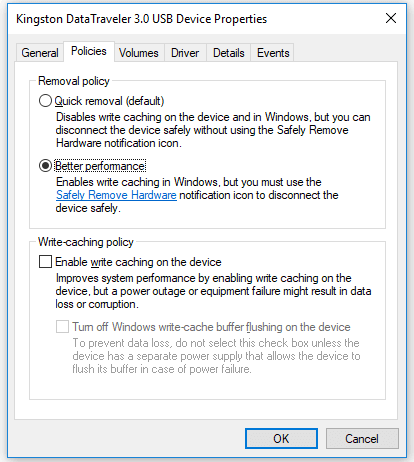[Too Slow!] How to Fix USB 3.0 Transfer Speed Pretty Slow
If you have a slow USB 3.0 drive, follow the methods to speed up your device.
| Workable Solutions | Step-by-step Troubleshooting |
|---|---|
| Fix 1. Use the Device Manager | Right-click on the Windows icon and select "Device Manager ". Expand Disk Drives in Device Manager and find your USB device, right-click on your USB device...Full steps |
| Fix 2. Convert USB 3.0 to NTFS | If the file system on your storage device is FAT32, you can convert it to NTFS to speed up the USB 3.0 drive. Before converting, you'd better back up your USB...Full steps |
USB 3.0 is Slow on Windows 10
Case 1. "I have bought a new USB 3.0 thumb drive and noticed that it gained surprisingly slow read/write speeds. A new USB 3.0 drive should at least have a write speed of 15–20 MB per second. But mine is no more than 50KB every second."
Case 2. "I tend to copy a lot of stuff to my Kingston USB 3.0 drive to put into my media player in the living room. Since having updated to Windows 10, I get a very slow transfer rate. I used to get around 20-30MB/s in Windows 7, but now the drive gets an extremely slow transferring speed on Windows 10! The copy speed is near 0 bytes!"
Method One. Use the Device Manager to Optimize USB 3.0
1. Right-click on the Windows icon and select "Device Manager ".
2. Expand Disk Drives in Device Manager and find your USB device, right-click on your USB device or hard drive and choose "Properties".
3. Go to the Policies tab and select "Better performance", click "OK" to make sure that you want to optimize and improve your USB transfer speed.
You will probably be prompted to restart the computer, and after you do, you should start to see substantially faster transfer speeds!

Method Two. Convert USB 3.0 from FAT32 to NTFS
If the file system on your storage device is FAT32, you can convert it to NTFS to speed up the USB 3.0 drive. Follow the two steps below now:
Part 1. Export and Restore Your Data from USB
Before converting your USB 3.0 to NTFS, you'd better backup your USB data to a new device to avoid data loss.
Here we'd like to recommend you try Qiling data recovery software - Data Recovery Wizard which supports you to thoroughly scan and find all existing and even lost files on the USB and extract to another safe location by simple clicks:
Step 1. Select file types and click "Next" to start
Connect the USB drive or pen drive to your computer and launch Qiling USB data recovery software on your PC. Select file types and click "Next" to start.

Step 2. Run USB Data Recovery Software
Select the drive which is labeled as a External drives, and click "Scan" to start looking for lost files.

Step 3. Scan and Search Lost Files on a USB Drive
Deep Data Recovery will thoroughly scan your USB flash drive/pen drive and find all your lost data on it. When the scan process completes, use the Filter feature to find wanted files.

Step 4. Restore All Lost Files from USB
A double-click will allow you to preview the files. Select the target files to restore and click "Recover" to save them to a secure location on your PC or other external storage devices.
Part 2. Convert USB from FAT32 to NTFS
- Right-click on Start and select Command Prompt (Admin).
- Sign in with your Administrator account if necessary.
- Type: convert E: /fs:ntfs and hit Enter. (Replace E: with the drive letter of your USB drive.)
After the process, you can check your USB drive and use it for file transfers to see the changes. If this method doesn't work well, you can format your USB. Do remember to back up your USB to avoid unnecessary data loss.
Related Articles
- How to Recover Deleted Chrome Bookmarks on Mac
- Fix IE Browser Shuts Down Suddenly in Windows 10/8/7 Error
- Fix: There Was a Problem Resetting your PC in Windows 10/8.1/8
- How to Clear Memory and Increase RAM in Windows 10/8/7?